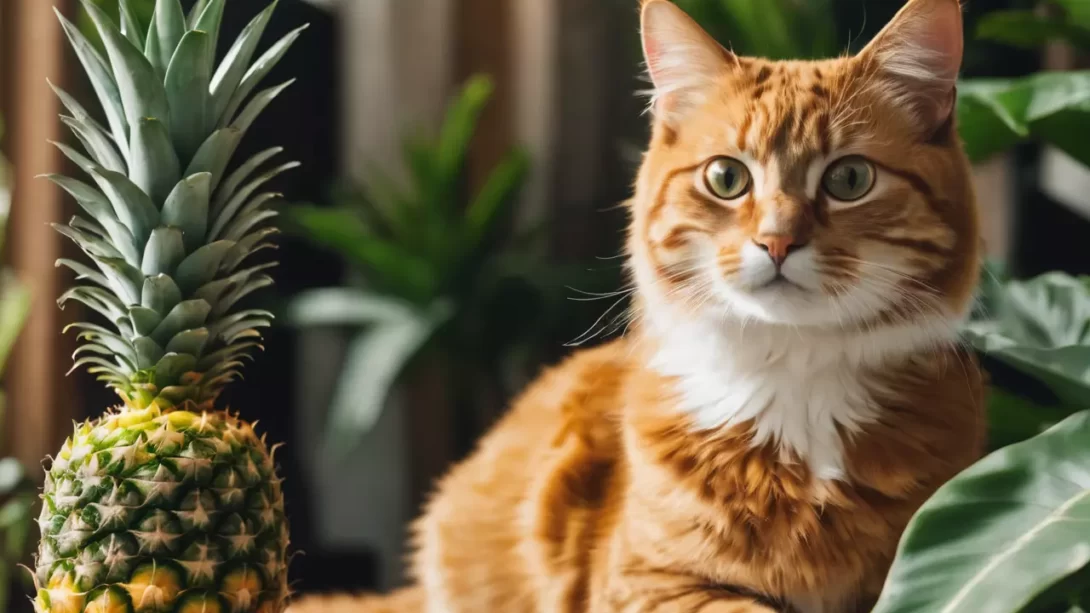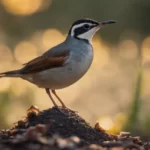Cats are naturally curious creatures, often intrigued by the plants in their environment. This curiosity can sometimes lead them to nibble on leaves, which raises concerns about plant safety. Pineapple, a popular tropical fruit, is known for its spiky leaves and sweet taste. While the fruit itself is a common household item, it’s important for cat owners to understand whether the leaves of this exotic plant are safe for their feline friends.
Pineapple Leaves: Basic Characteristics
Pineapple leaves are long, tough, and have a spiky texture, growing directly from the top of the fruit and forming a dense rosette. Their rigidity and sharp edges are distinctive, and these leaves can grow quite large, depending on the size of the pineapple. For cats, these leaves might be appealing due to their movement and texture, provoking a cat’s interest for play or chewing. However, their tough and spiky nature can pose physical risks to cats, beyond any potential toxicity.
The Safety of Pineapple Leaves for Cats
When it comes to the safety of pineapple leaves for cats, the primary concern is not necessarily toxicity. Unlike some plants that are known to be toxic to cats, pineapple leaves are not typically considered poisonous. However, this does not mean they are safe. The physical structure of the leaves can cause harm to cats. Their sharp edges and fibrous material can lead to injuries in the mouth, throat, or digestive tract if ingested. Furthermore, even if a cat doesn’t ingest the leaves, merely chewing on them can result in cuts or irritation to the mouth and gums. Therefore, while pineapple leaves might not be toxic in the traditional sense, they can still be hazardous to cats.
Potential Hazards of Pineapple Leaves to Cats
The physical risks posed by pineapple leaves can vary in severity. If a cat chews on these leaves, the sharp edges can cause cuts or abrasions in the mouth and throat, leading to discomfort or, in severe cases, bleeding. Ingesting the leaves is particularly dangerous, as their tough, fibrous nature makes them difficult to digest. This can lead to gastrointestinal blockages, a serious condition that may require veterinary intervention. Additionally, the size of the pineapple leaves can be a choking hazard, especially for smaller or younger cats. Cat owners should be vigilant for symptoms like gagging, vomiting, lack of appetite, or difficulty swallowing, which could indicate complications from interacting with pineapple leaves.
Safer Alternatives for Cats
For cat owners looking to provide safe plant interaction for their pets, there are several non-toxic and cat-friendly alternatives. Plants like cat grass (wheatgrass), catnip, and spider plants are generally safe and can provide an outlet for a cat’s natural urge to chew on foliage. It’s always a good idea to have these safer plant options available to divert attention away from potentially harmful ones. Additionally, creating a designated area or “cat garden” with these safe plants can help satisfy a cat’s curiosity while keeping them away from dangerous plants like pineapple leaves.
Preventing Unwanted Plant Interactions
Preventing a cat’s access to potentially harmful plants like pineapple leaves is key to ensuring their safety. Keeping such plants out of reach, either by placing them in inaccessible areas or using protective barriers, can help reduce the risk. Training and redirecting a cat’s attention to safer plants or toys can also be effective. Consistently discouraging your cat from approaching hazardous plants and rewarding them for choosing safer alternatives can reinforce positive behavior. This proactive approach in managing your cat’s environment is an important aspect of responsible pet ownership.
What to Do If Your Cat Ingests Pineapple Leaves
If you suspect your cat has ingested pineapple leaves, it’s important to act quickly. First, remove any remaining leaf material from your cat’s reach. Observe your cat for any immediate signs of distress, such as choking, gagging, excessive drooling, or attempts to vomit. If you notice these symptoms, or if your cat is behaving unusually, contact your veterinarian immediately. In cases where the ingestion was substantial, or if the cat is showing severe symptoms, emergency veterinary care may be necessary. Keep a piece of the ingested leaf, if possible, to show the veterinarian for more accurate identification and treatment.
When to Seek Veterinary Assistance
Not all cases of pineapple leaf ingestion will require a visit to the vet, but it’s crucial to know when medical intervention is necessary. If your cat is showing signs of gastrointestinal distress, such as vomiting, diarrhea, or lack of appetite, or if there are any signs of mouth or throat injury, professional veterinary advice should be sought. Your veterinarian can provide guidance on monitoring your cat at home or may recommend bringing them in for an examination, depending on the severity of the symptoms.
Conclusion
In conclusion, while pineapple leaves are not toxic to cats in the traditional sense, they can still pose significant physical risks. The sharp, fibrous nature of the leaves can lead to injuries and gastrointestinal issues if ingested. Cat owners should ensure that pineapple plants, along with any other potentially harmful plants, are kept out of their pets’ reach. By providing safe plant alternatives and taking preventive measures, you can help ensure your cat’s safety and well-being. Remember, responsible pet ownership involves not only loving care but also creating a safe and healthy environment for your furry companions.



